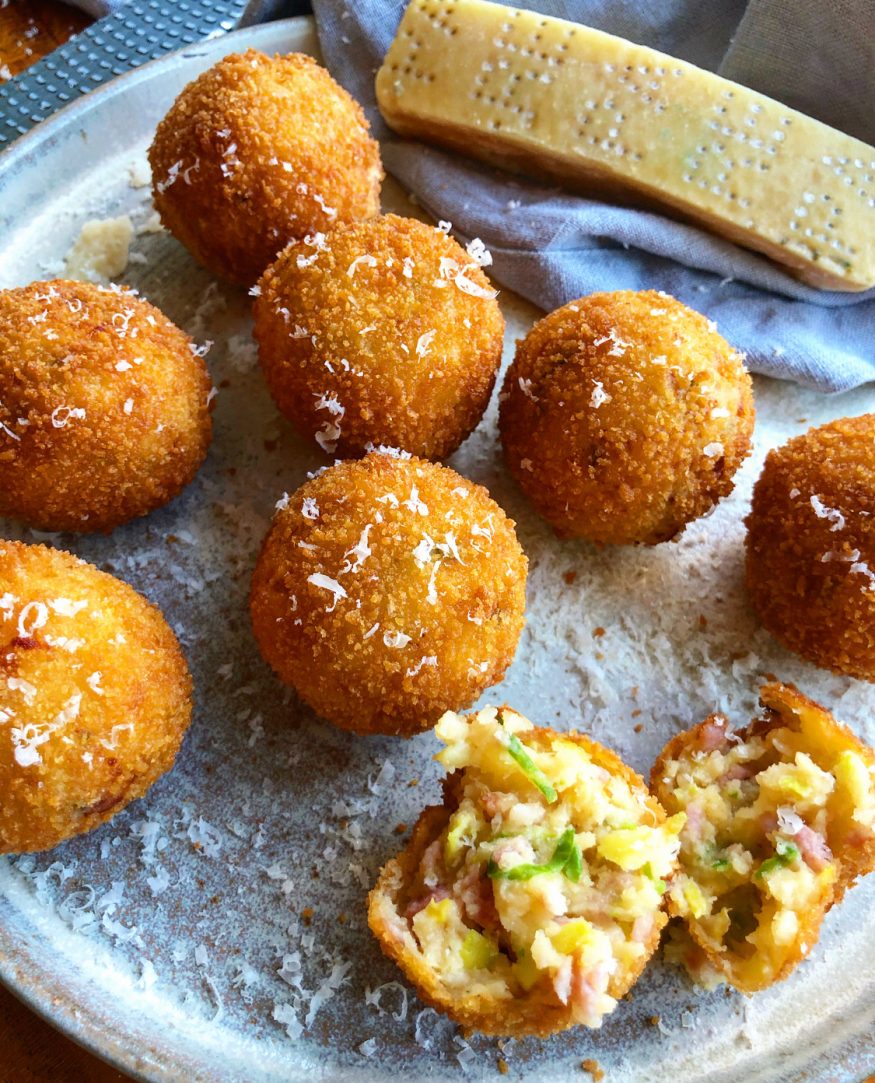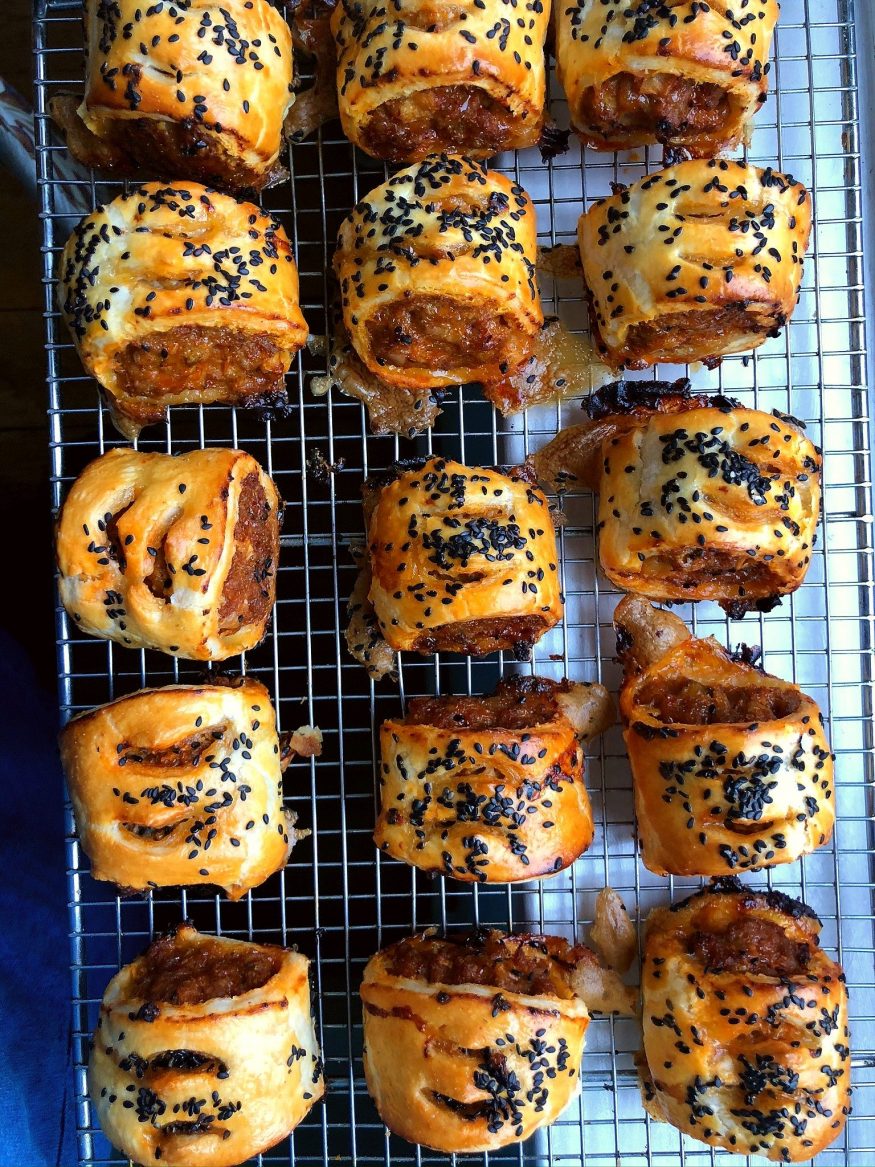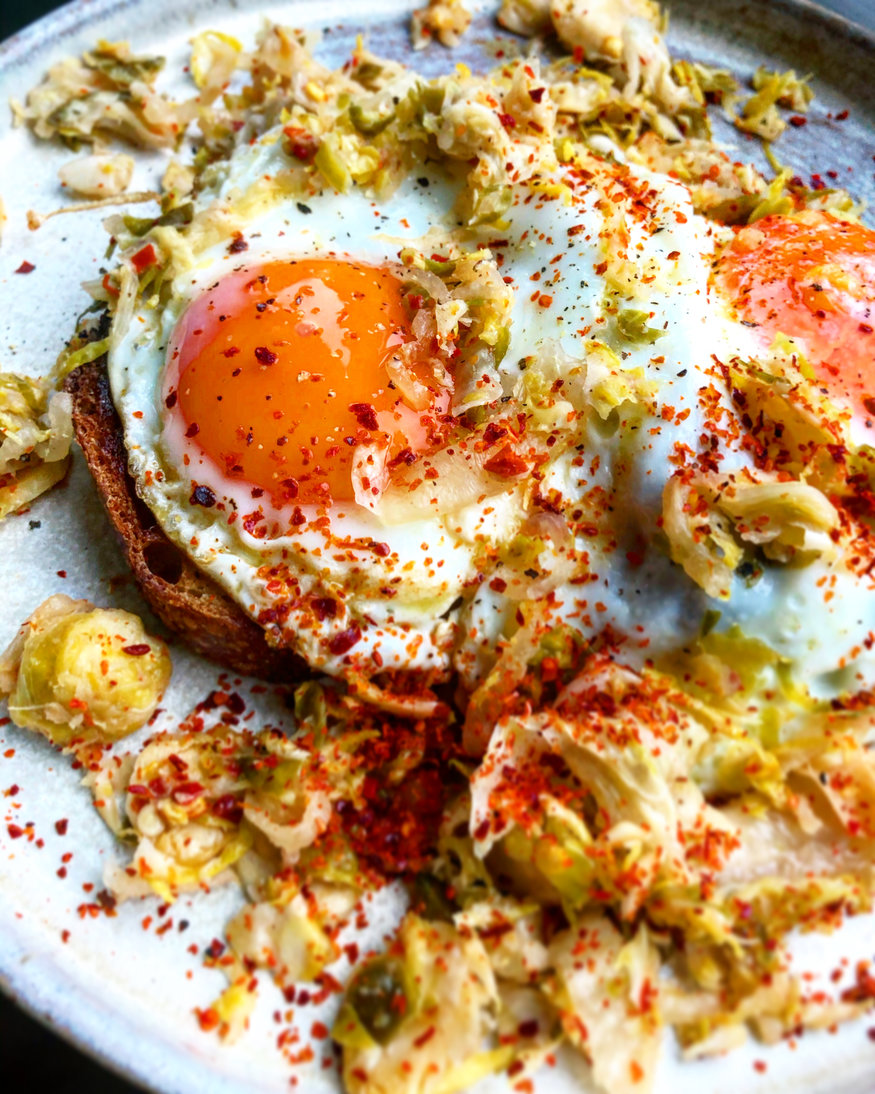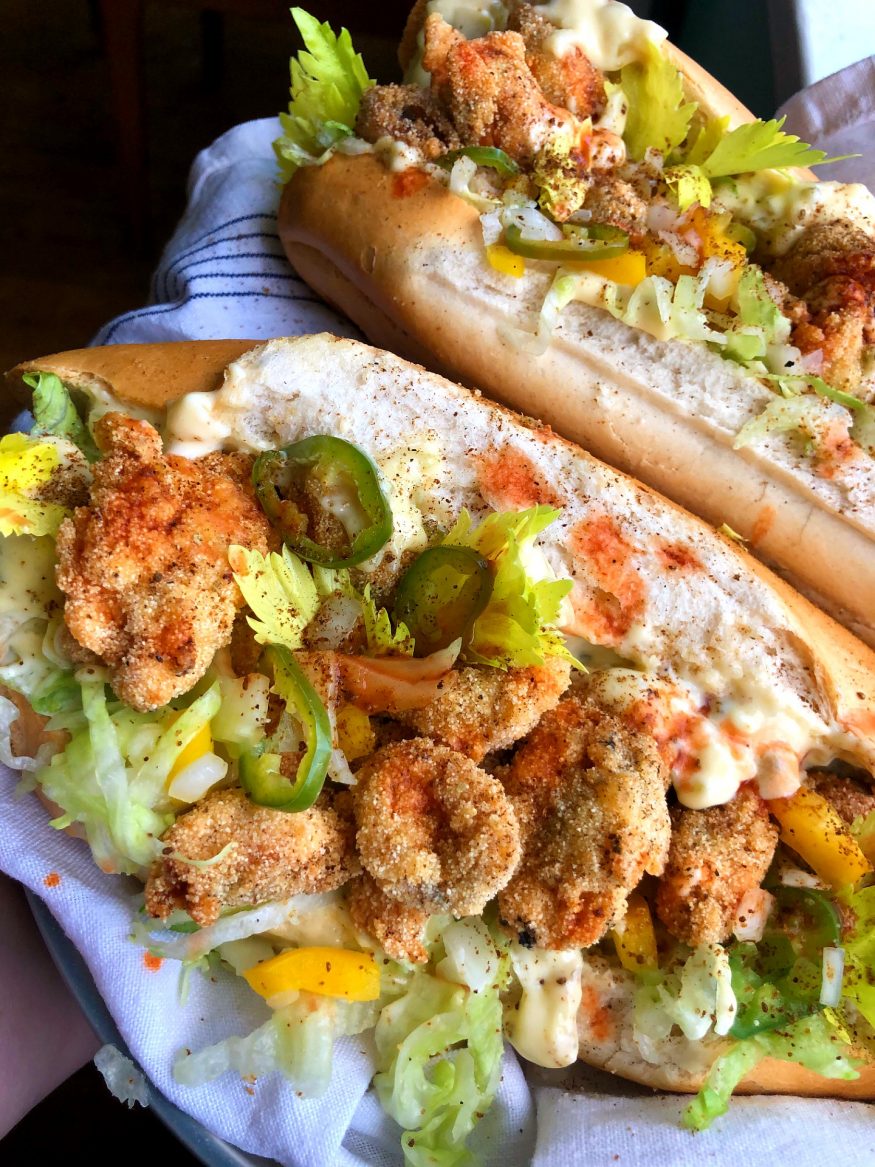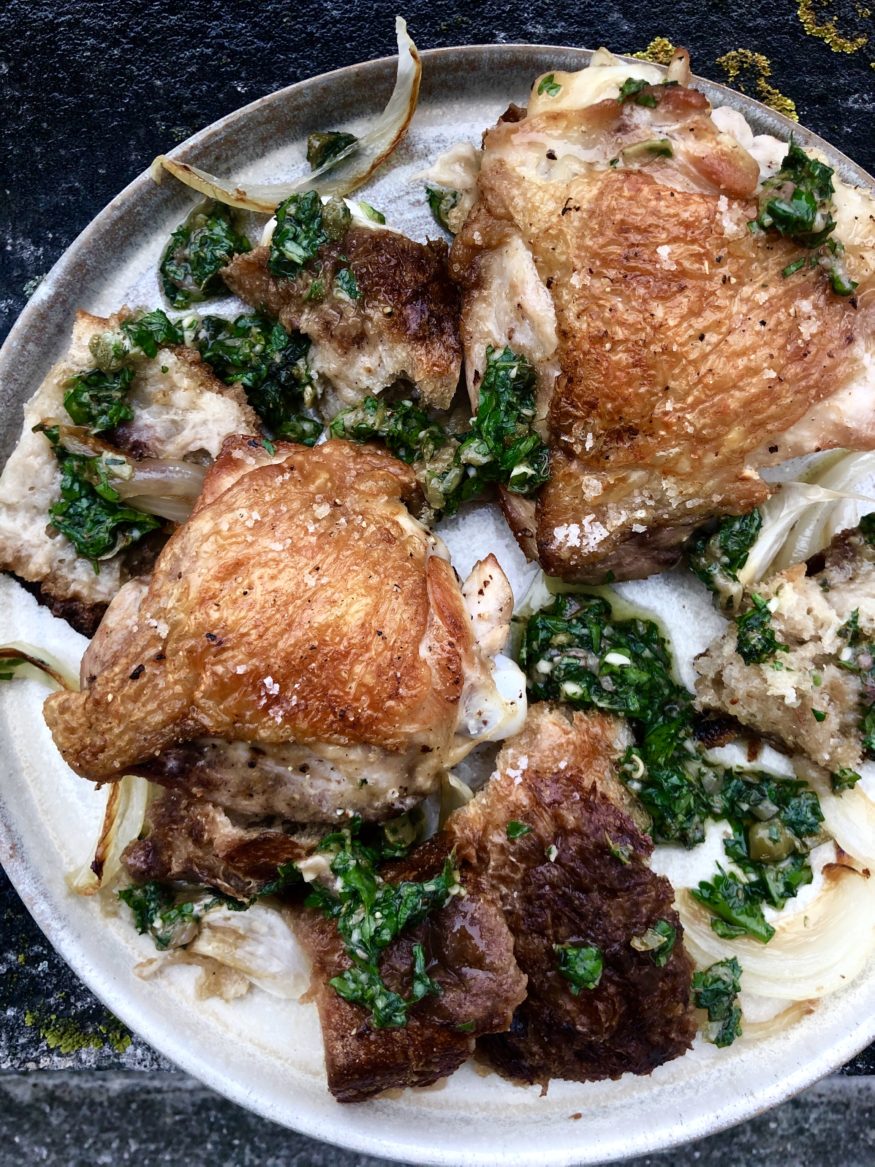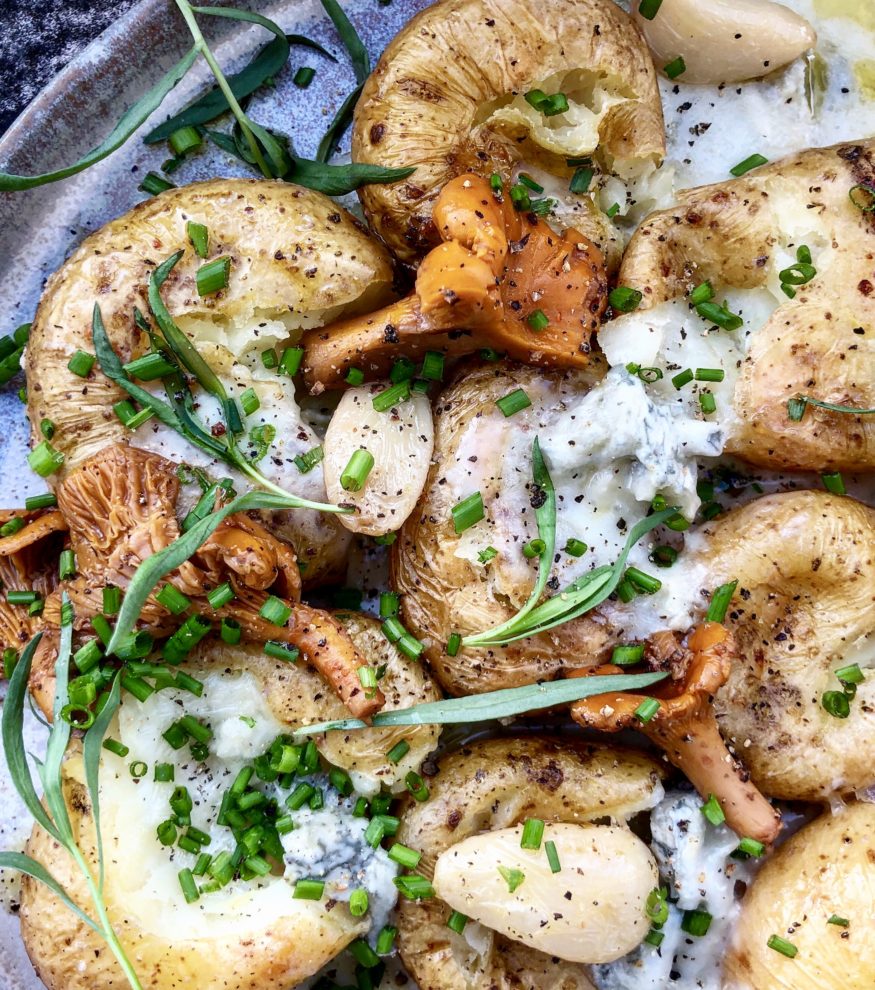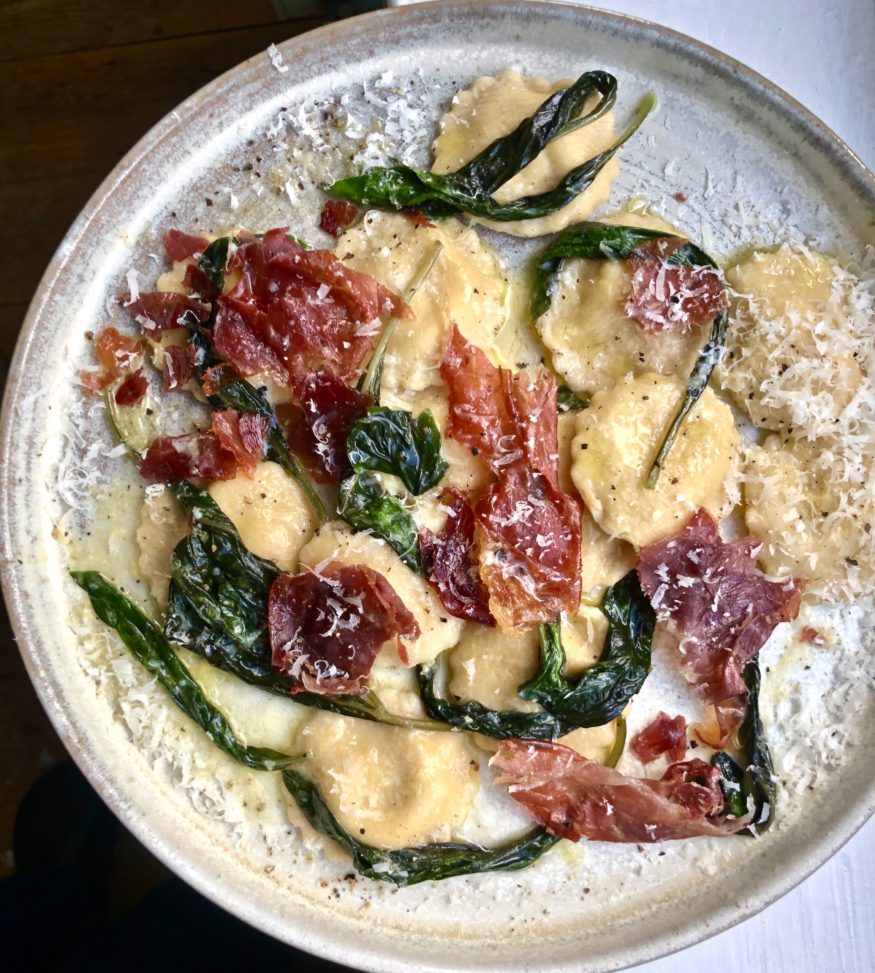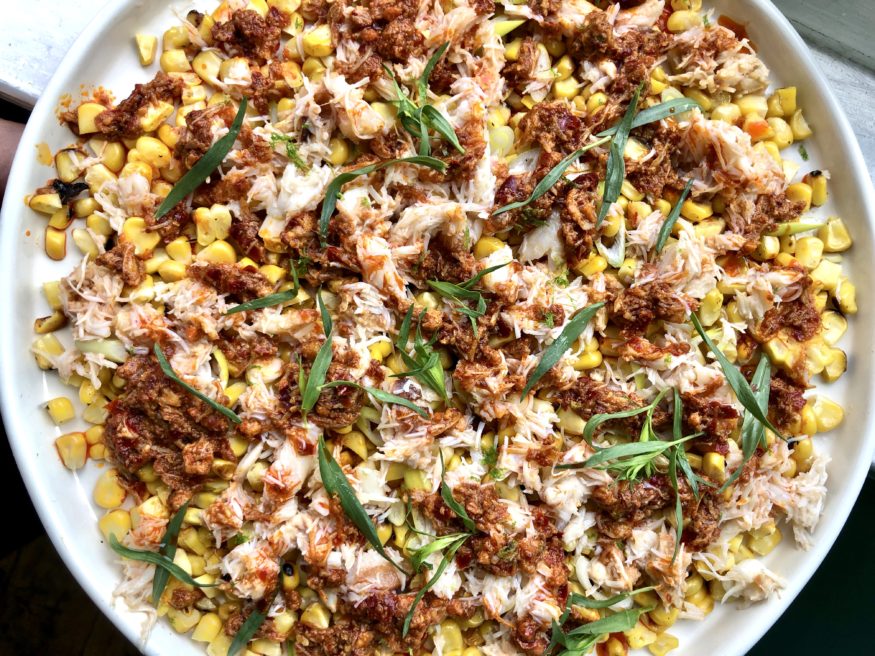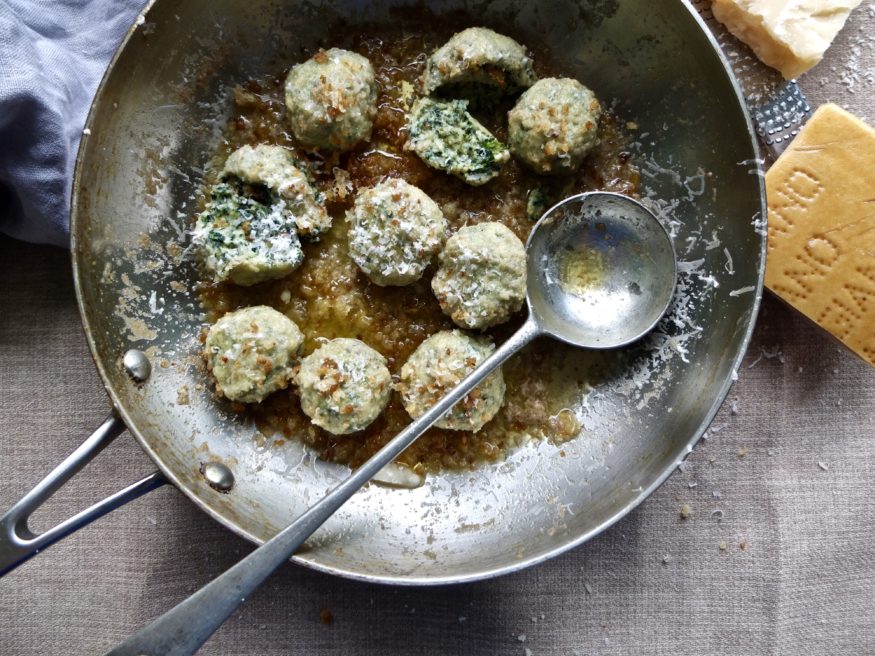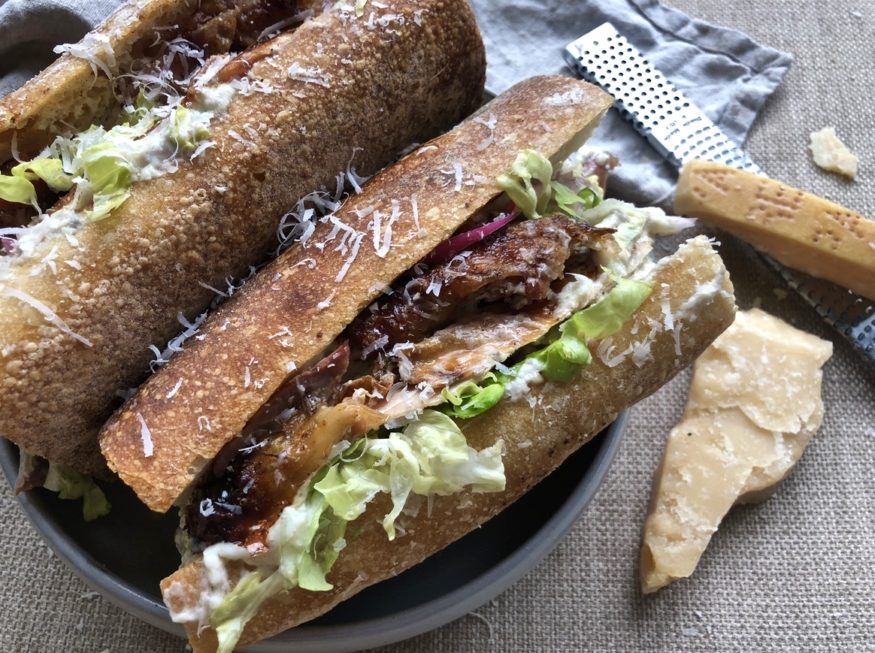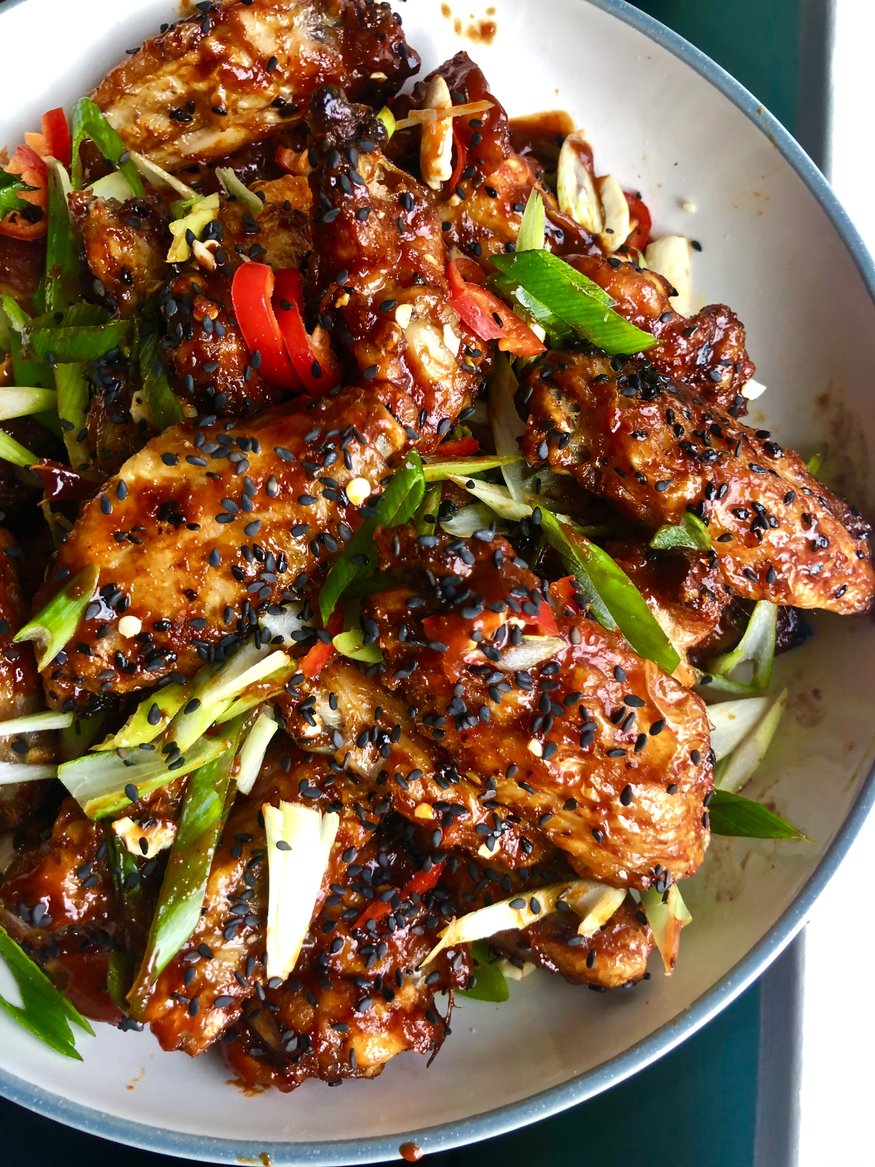
It doesn’t take long before I start craving bright, East Asian flavours around Christmas time; crackling chilli mingled with lime’s fragrant acidity and the umami depth of soy. There’s only so much cheese, dried fruit and pastry a person can take and in and between it all I want my palate revived and excited.
These wings are perfect party food and the best thing is you can oven-bake them. Deep frying at home can be a hassle. It’s fine once or twice a year but there’s no getting away from the fact it makes your house reek. Instead, try sprinkling the wings with bicarbonate of soda and salt and leaving overnight in the fridge (or even a few hours) where they will dry out nicely, giving you ultra-crisp skin.
The sauce is straight-up addictive. I personally like a fair bit of acidity on my Korean wings as it balances the sweetness of the gochujang and sugar. The garnish is essential too; this is not a timid recipe. Slivers of spring onion and chilli, crunchy toasted peanuts and plenty of sesame seeds complete the dish. It’s an OTT mess, and all the better for it.
Crispy Baked Korean Chicken Wings Recipe
Makes 24 pieces
12 chicken wings, tips removed (put these in the freezer for stock!) and cut into drums and flats (jointed, basically – easy for your butcher but also easy at home with a sharp knife).
1/2 teaspoon bicarbonate of soda
1 teaspoon onion powder (not essential but fun)
1/2 teaspoon garlic powder (as above)
2 teaspoons sea salt
For the sauce
3 tablespoons gochujang
3 tablespoons soy sauce
1 tablespoon dark brown sugar
1 tablespoon rice vinegar
2 teaspoons sesame oil
5 fat cloves smoked garlic, crushed or finely grated (obviously you could use regular, unsmoked garlic)
Juice of 2-3 limes
To garnish
Finely sliced spring onions
Finely sliced red chilli
Crushed, toasted peanuts
Black or white sesame seeds
Combine the bicarbonate of soda, salt and onion and garlic powders (if using) in a large bowl. Add the chicken wings and mix very well, to ensure all the wings are coated. Arrange the wings on a rack over a baking tray and refrigerate, uncovered, overnight (or for at least three hours). It’s fine to put the wings right next to each other but don’t stack them up or squidge them together too tightly.
When you’re ready to cook the wings, preheat the oven to 220C.
The best way to cook the wings is on a rack over a baking tray, although you may need to use two trays, so they’ve got space to crisp up nicely. If you don’t have racks, just do them on a baking tray brushed with a tiny bit of oil.
Cook the wings for 40 minutes, turning them halfway through.
To make the sauce, combine all the ingredients apart from the lime juice in a small saucepan and heat gently, stirring for a few minutes until the sugar is dissolved and the sauce is bubbling. Turn off the heat and squeeze in the juice of 1 lime to start with, then taste and add more if necessary.
Coat the wings with as much sauce as you like and fling all those garnishes over the top. Serve with extra wedges of lime and approximately 10000 napkins.
